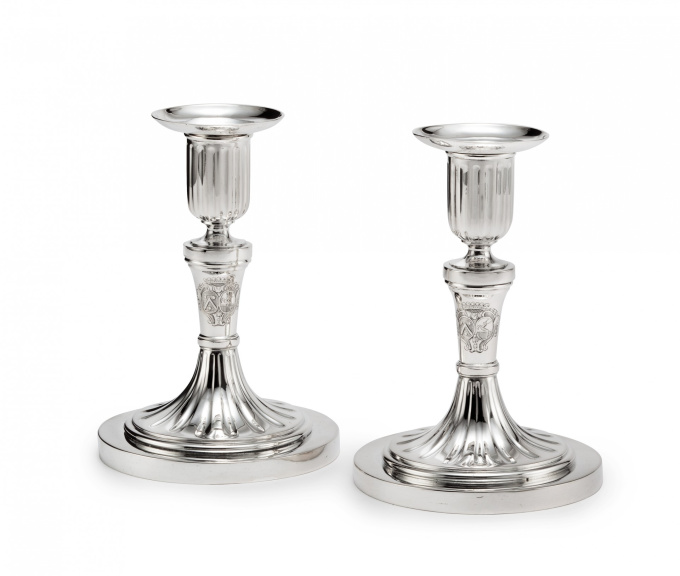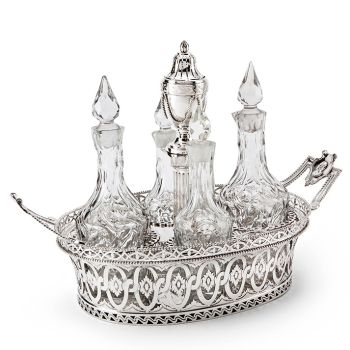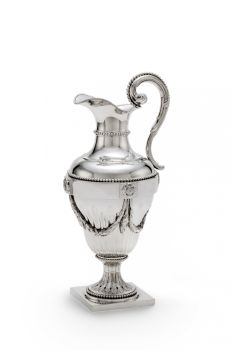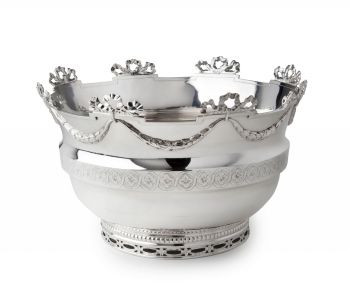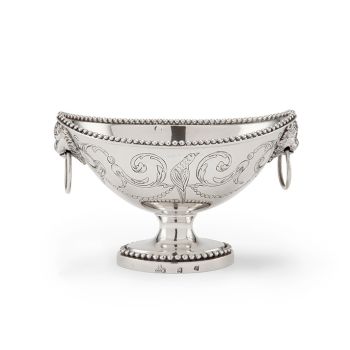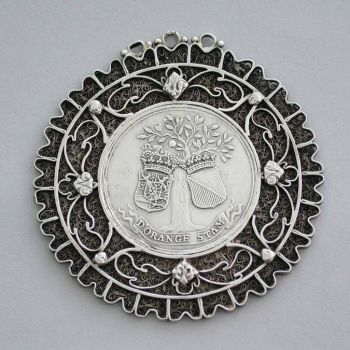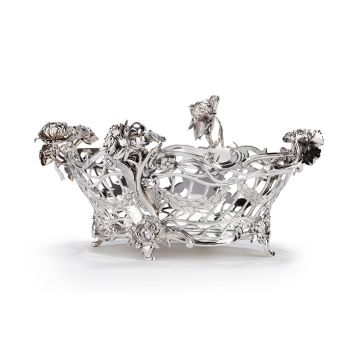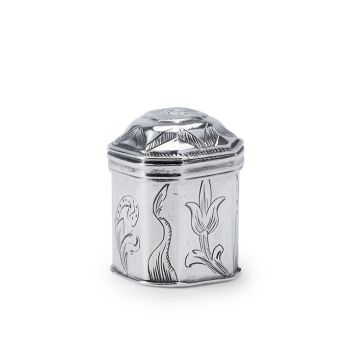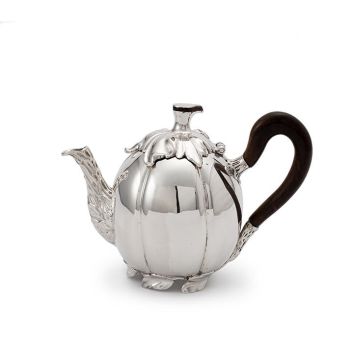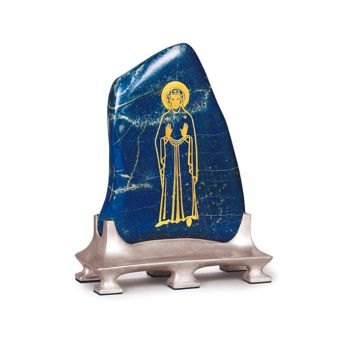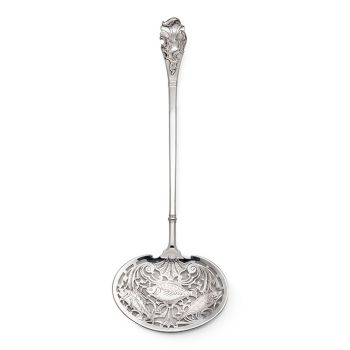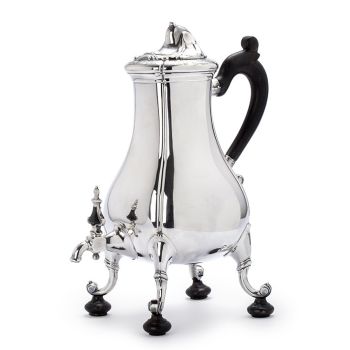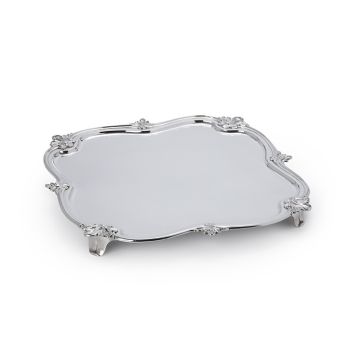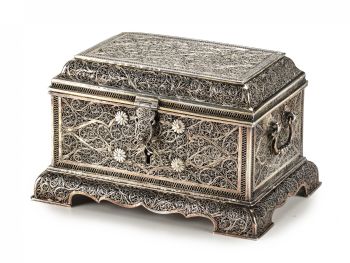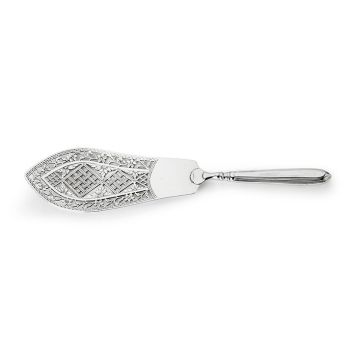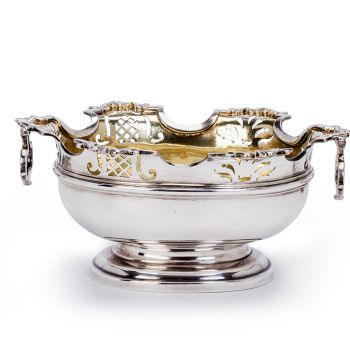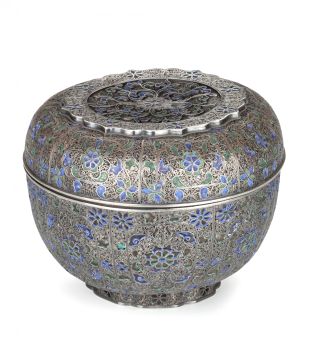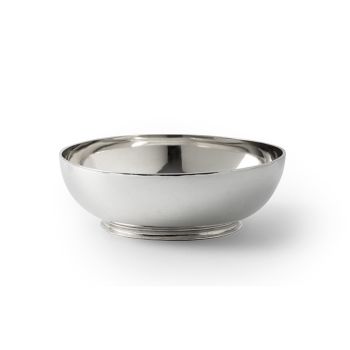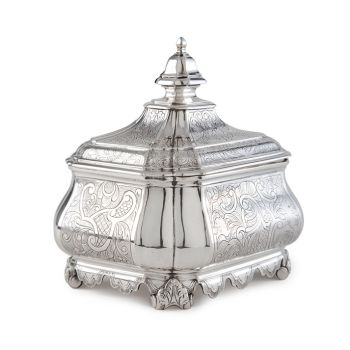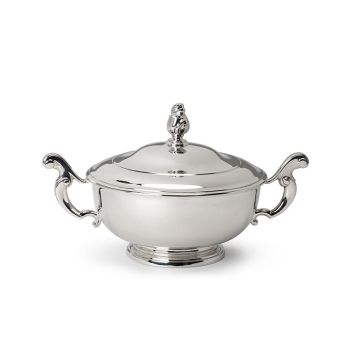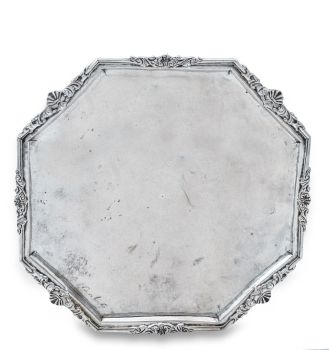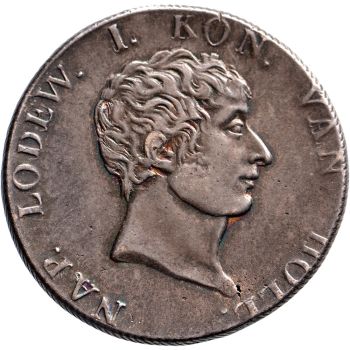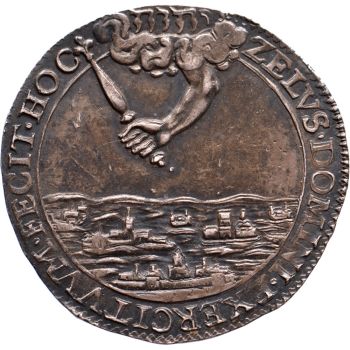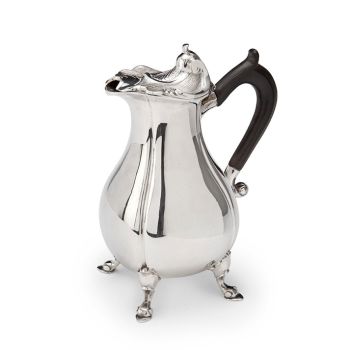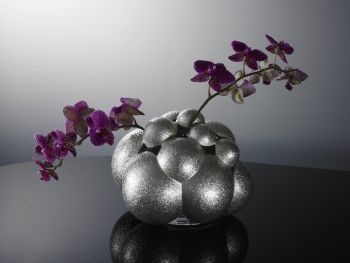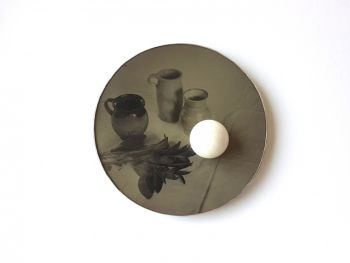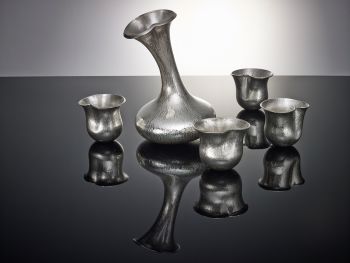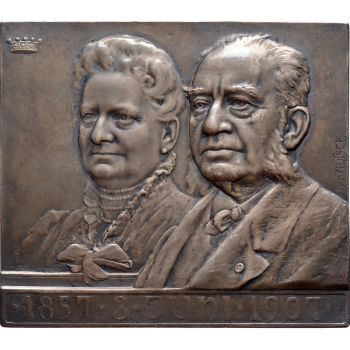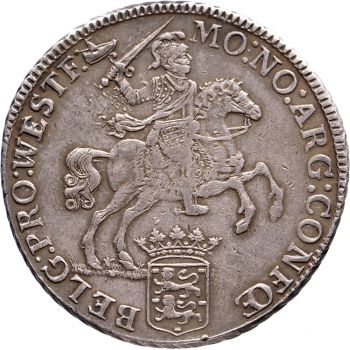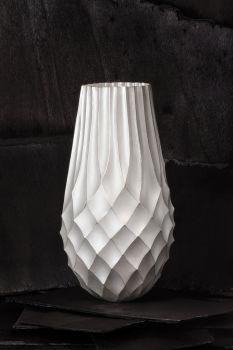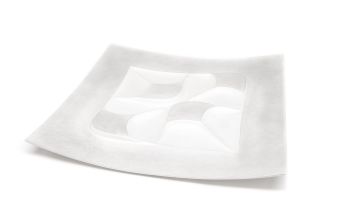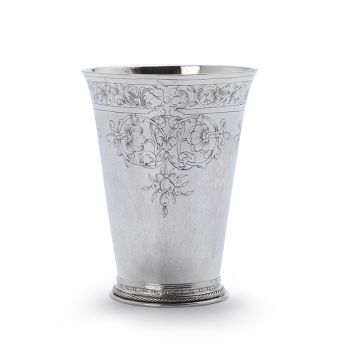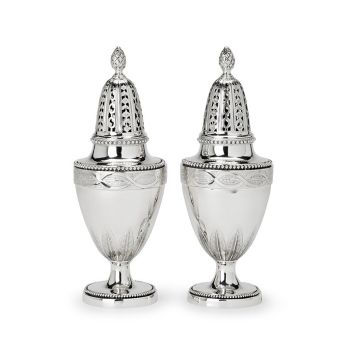Ein Paar holländische silberne Kerzenhalter 1784
Johannes Schiotling
Silber
15 cm, ø 10 cm
Preis auf Anfrage
Jacob J. Roosjen SRI
- Über KunstwerkThe candlesticks consist of a round base, which is partially fluted and transitions into the stem, engraved with the coats-of-arms of HOPE and VAN DER HOEVEN. The sconce is fluted in similar outline and has a detachable nozzle, which is engraved with the same coats-of-arms. Fully marked at the reverse of the base, displaying assay stripes.
The coats-of-arms are those of John Hope (1737-1784) and his wife Philippina Barbara van der Hoeven (1738- 1790). This couple married in 1763.
Hope was a famous Amsterdam merchant and banker. He was governor of the East India Company and many times a member of the Board of Aldermen in Amsterdam.
These small candlesticks, possibly made as gaming table candlesticks, were manufactured in 1784, the year John Hope died.
They are included in the catalogue associated with the exhibition at the Rijksmuseum, dedicated to the work of silversmith Johannes Schiotling (Cat. 37).
John Hope (1737-1784) was a fabulously wealthy Amsterdam banker of English origin. In 1763 he married Barbara Philippina van der Hoeven (1738-1789), daughter of a Rotterdam regent. They had three sons. Besides a house at Keizersgracht and Herengracht in Amsterdam and a house in The Hague, John Hope had various estates, namely Groenendaal, which he merged with Bosbeek in Heemstede and Castle Nederhorst, which allowed him to be called Lord of Nederhorst and ’s Gravenambacht since 1774. John's ambitions were not only in trading. In 1765 he became alderman of Amsterdam, in the Amsterdam Council in 1768 and in 1770 he became governor of the VOC. Besides houses John also collected art. In 1771, together with his uncle Adrian, he bought paintings from the estate of their Rotterdam friend Bisschop.
The Bisschop Cabinet was a renowned collection, containing paintings of almost all Northern and Southern Dutch 17th century masters. This collection John Hope filled with paintings by Rembrandt, Ter Borch and Metsu from the collection Braamcamp. He had an extensive collection of sculptures in marble, stone, ivory and plaster, Japanese lacquer ware, porcelain and antique mosaic table tops from the excavation at Tivoli.
Provenance:
-John Hope and his wife Philippina Barbara van der Hoeven, 1784-1789
-Lord Francis Pelham Clinton Hope, Deepdence, Dorking
-Collection Joseph M. Morpurgo, Amsterdam, ca 1960-2016.
Literature:
-Exhibition catalogue, Johannes Schiotling, een Amsterdamse zilversmid (1730-1799), Rijksmuseum Amsterdam, 1976, cat. nr. 37.
J. Verbeek, Antiek, Johannes Schiotling, zilversmid (1730-1799) en John Hope, bankier (1737-1784), 11e jrg nr. 6, 1977, pp 523-524, afb. 12.
-J.W. Niemeijer, ‘De kunstverzameling van John Hope’, Verzamelen in Nederland, Nederlands Kunsthistorisch Jaarboek nr. 32 (1981), pp. 127-232. - Über KünstlerJohannes Schooling (1730, 1799) wurde 1730 in Göteborg, Schweden, geboren. Er war ein bekannter Silberschmied. 1747 begann er eine sechsjährige Ausbildung bei Olof Fernlöf, einem der besten Silberschmiede in Göteborg. 1753 bestand er seine Gesellenprüfungen. Über die nächsten neun Jahre ist nichts bekannt; wahrscheinlich reiste er herum, bis er 1762 in Amsterdam landete. Schiotling meldete sich als Meister bei der Amsterdamer Silberschmiedegilde an und heiratete. In Amsterdam zog eine Gruppe von Silberschmieden um ihn herum. Seine Firma produzierte zahlreiche Stücke und Schiotling konzentrierte sich zunehmend auf den Einzelhandel anstatt auf die Herstellung von Silberobjekten. Obwohl seine Werkstatt viele Kandelaber produzierte, verkaufte er viele verschiedene Gegenstände. Johannes Schiotling starb 1799.
Sind Sie daran interessiert, dieses Kunstwerk zu kaufen?
Artwork details
Kategorie
Stil
Material & Technik
Farbe
Related artworks
- 1 - 4 / 6
Jan Cornelis van Hemert
Niederländischer silberner Süßigkeitskorb1799
Preis auf AnfrageJacob J. Roosjen SRI
Salomon Lamberts
Holländische silberne kürbisförmige Teekanne1766
Preis auf AnfrageJacob J. Roosjen SRI
Elisabeth Treskow
Afghanischer Lapislazuli mit Gold eingelegt auf einem silbernen Ständer1950 - 1960
Preis auf AnfrageJacob J. Roosjen SRI
Unbekannter Künstler
Ein holländischer silberner Süßigkeitskorb1738
Preis auf AnfrageJacob J. Roosjen SRI
1 - 4 / 24Unbekannter Künstler
A silver spoon commemorating Juff’ Margareta van Hoorn1656 - 1694
Preis auf AnfrageZebregs & Röell - Fine Art - Antiques
1 - 4 / 24Jan Cornelis van Hemert
Niederländischer silberner Süßigkeitskorb1799
Preis auf AnfrageJacob J. Roosjen SRI
Jarich Gerrits van der Lely
Niederländisches Silberbecherglas1657
Preis auf AnfrageJacob J. Roosjen SRI
Salomon Lamberts
Holländische silberne kürbisförmige Teekanne1766
Preis auf AnfrageJacob J. Roosjen SRI
Elisabeth Treskow
Afghanischer Lapislazuli mit Gold eingelegt auf einem silbernen Ständer1950 - 1960
Preis auf AnfrageJacob J. Roosjen SRI
1 - 4 / 12

